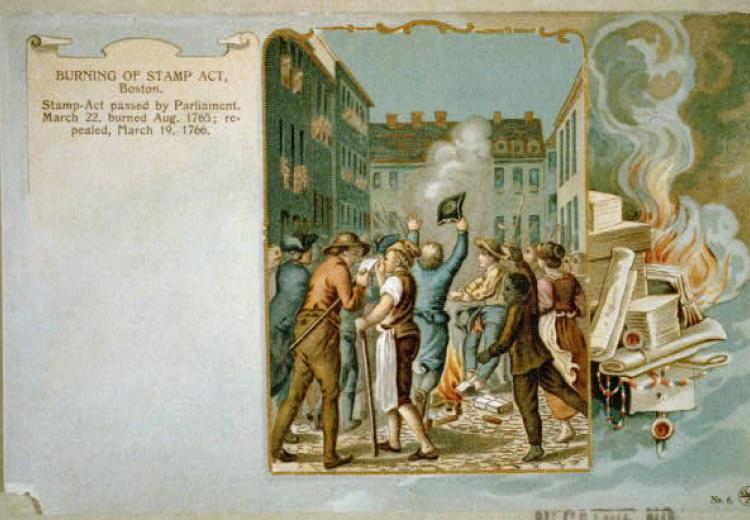Coming of the American Revolution

A postcard from 1903 depicting colonists protesting the Stamp Act of 1775.
The NEH-funded resource The Coming of the American Revolution provides a collection of brief essays and primary sources organized around 15 topics pertaining to the end of British rule in the American colonies. Primary sources are available as both high-quality images of the original documents and transcriptions for easier reading; the two versions can be viewed side-by-side. The array of primary sources included brings new life and perspective to the events leading up to the Revolution.
Classroom Connections
The Massachusetts Historical Society offers a selection of lesson plans designed specifically for this resource. EDSITEment also has many resources devoted to the American Revolution. Those listed below offer general overviews of the conflict as well as the perspectives of some groups often considered marginal to (revolutionary) history.
- Media Resource: The Papers of the War Department: The project gives users free access to over 42,000 War Department documents that date from 1784 to 1800. The topics of these papers examine a broad range of issues, events, and trends that occurred during the Early Republic, including distribution of clothing and disbursement of pensions, correspondence between officers and department leadership about interactions with Indigenous groups, and the general operations of the largest government agency of the time.
- Curriculum: The American War for Independence (grades 9-12): This series of three lessons concentrates on diplomatic and military history, using primary sources and interactive maps to give students an understanding of the contours of the conflict.
- Lesson Plan: Not Only Paul Revere: Other Riders of the American Revolution (grades 6-8): Students have a chance to move beyond Paul Revere's celebrated ride and learn about other message-bearers in the American Revolution, as well as reflect on the unequal place of these other riders in historical and popular memory of the war.
- Lesson Plan: Colonial Broadsides and the American Revolution (grades 6-8): Students will learn about the different perspectives expressed in colonial broadsides by working directly with these primary sources.
- Lesson Plan: Voices from the American Revolution (grades 9-12): Working with primary sources, students will analyze the complex and varying reasons a person might choose to support Britain or the colonies during the American Revolution.
